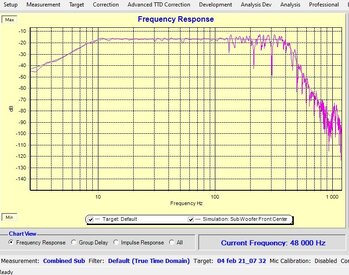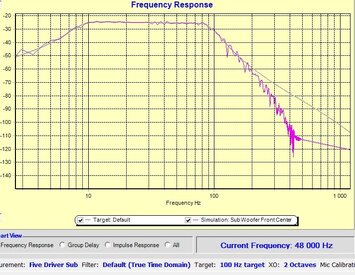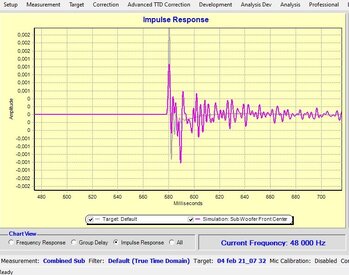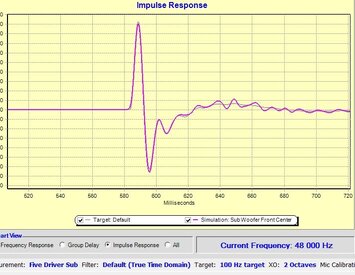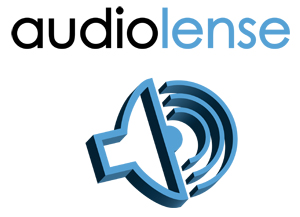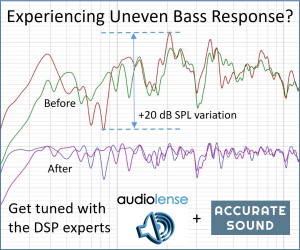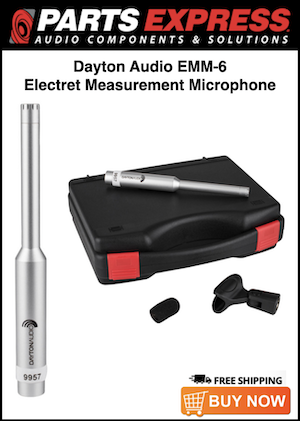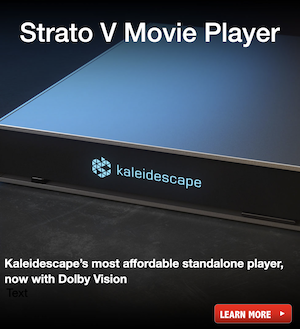I am using Audiolense (AL) to correct a large subwoofer array. In this case, the array has seven subwoofers of three totally different cabinet designs aligned across a 22-foot-wide sound stage.
There is a Klipschorn in each of the left and right corners, an Infinite Baffle (IB) sub in the middle under the center speaker, and two Epik Empire subs flanking on each side of center.

There is a total of fourteen 15" drivers in those seven cabinets: four in the IB, two in each Epik, and one in each Khorn. There are 5 separately amplified channels: two Khorns; two Epik pairs; and one IB.
I will compare three Audiolense solutions:
Solution 1: Here are the five individual sub measurements in AL. Driver 0 & 4 are the Khorns, 1 & 3 are the Epiks, #2 is my home built IB. None of the subs have internal amps or signal processing of any kind. Oddly, they all have the same output at 38 Hz.

To get AL to generate useable filters for the highly different responses it was essential to select the no bass boost option. I could not assign per driver targets. Here is the simulated corrected performance (frequency only correction, minimum phase target).

Solution 2: Here is the result measuring all subs together as a group:

Solution 3: Multi-Sub Optimizer software develops filter sets with the objective of getting the combined sub response as similar as possible in all listening positions. I measured the five subs in four listening positions with Room Equalizer Wizard and used MSO to create a filter set.

Here is the result measuring all subs together as a group through the MSO filters (the MSO filters are loaded into my MOTU 16a audio interface).

Here is the step response of solution 3, it looked the best to me:

Next I'm going to attempt to measure the three AL filter solutions in the four listening positions. I'll use Room Equalizer Wizard software and measure through the AL convolver. This should reveal if MSO does improve the seat-to-seat response variation.
There is a Klipschorn in each of the left and right corners, an Infinite Baffle (IB) sub in the middle under the center speaker, and two Epik Empire subs flanking on each side of center.
There is a total of fourteen 15" drivers in those seven cabinets: four in the IB, two in each Epik, and one in each Khorn. There are 5 separately amplified channels: two Khorns; two Epik pairs; and one IB.
I will compare three Audiolense solutions:
- AL measures each sub channel individually as one sub with five drivers.
- AL measures all five sub channels together as a group.
- AL measures all five sub channels together as a group through filters developed with "Multi-Sub Optimizer" software.
Solution 1: Here are the five individual sub measurements in AL. Driver 0 & 4 are the Khorns, 1 & 3 are the Epiks, #2 is my home built IB. None of the subs have internal amps or signal processing of any kind. Oddly, they all have the same output at 38 Hz.
To get AL to generate useable filters for the highly different responses it was essential to select the no bass boost option. I could not assign per driver targets. Here is the simulated corrected performance (frequency only correction, minimum phase target).
Solution 2: Here is the result measuring all subs together as a group:
Solution 3: Multi-Sub Optimizer software develops filter sets with the objective of getting the combined sub response as similar as possible in all listening positions. I measured the five subs in four listening positions with Room Equalizer Wizard and used MSO to create a filter set.
Here is the result measuring all subs together as a group through the MSO filters (the MSO filters are loaded into my MOTU 16a audio interface).
Here is the step response of solution 3, it looked the best to me:
Next I'm going to attempt to measure the three AL filter solutions in the four listening positions. I'll use Room Equalizer Wizard software and measure through the AL convolver. This should reveal if MSO does improve the seat-to-seat response variation.








